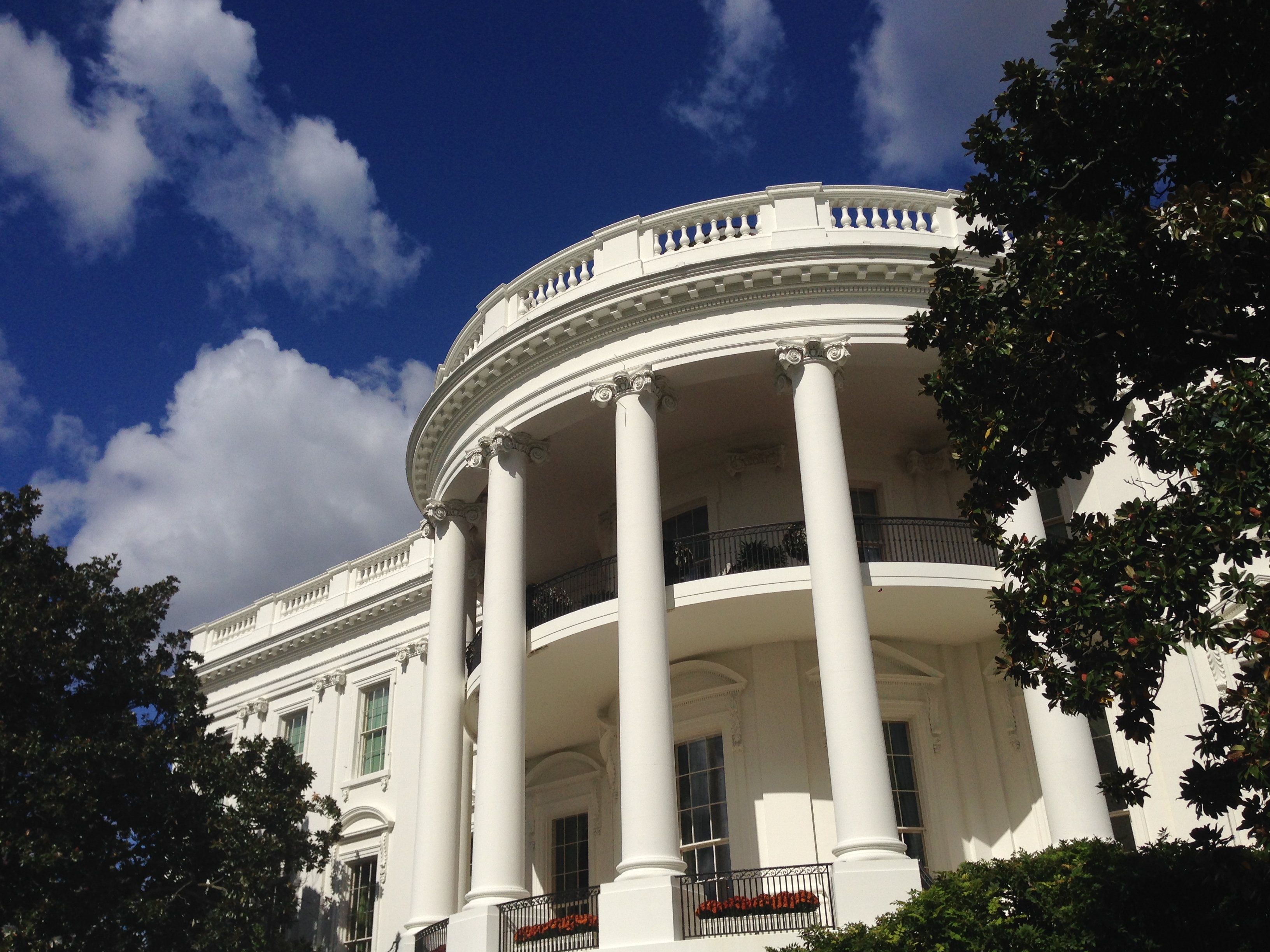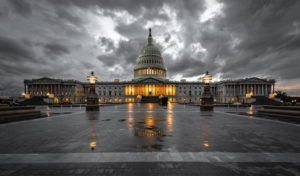
Penn Law hosts symposium on the legality of contemporary uses of executive power.
The framers of the U.S. Constitution envisioned a government consisting of three branches, each with its own powers and responsibilities. The reason for such a government was to prevent any one branch from becoming too powerful—and especially to prevent the president from becoming a monarch like King George III of the English Empire.
Today, the office of the presidency has grown in size and power, vastly exceeding the scope of the presidency at the founding of the United States. This massive growth in presidential power has hardly escaped notice—or controversy.
The Supreme Court of the United States recently decided to take up an appeal involving the Obama Administration’s immigration reforms. The President announced in 2014 that his administration would grant deferrals from deportation to certain immigrants who are unlawfully present in the country.
But the Constitution orders the president to “take care that the laws be faithfully executed.” Is deferring action against individuals who are not in compliance with the law consistent with the president’s duty of faithful execution?
Of course, the government will never have the resources to pursue formal enforcement actions against each and every violation of the law, whether in the area of immigration or other regulatory realms. There must be some discretion for government officials to pick and choose—and to decide not to pursue enforcement in some cases. The Supreme Court has even stated as much in its 1985 decision in Heckler v. Chaney.
But are there limits to how far the president and executive branch can take enforcement discretion? How far is too far?
To help in answering these questions, Penn Law professors Cary Coglianese and Christopher Yoo worked with the University of Pennsylvania Law Review to convene a symposium last fall around presidential authority in the regulatory state. The Symposium, co-sponsored by the Penn Program on Regulation, featured presentations by the nation’s foremost constitutional and administrative scholars and practitioners.
The University of Pennsylvania Law Review will be publishing the papers presented at the Symposium in a volume to appear later this year. But especially given the timeliness of the Supreme Court’s decision to hear the immigration reform case, The Regulatory Review is pleased to provide a “sneak preview” of the Law Review’s upcoming Symposium issue.
In cooperation with the Law Review staff, The Regulatory Review is featuring a series of brief essays written by our staff writers and editors that summarize each of the Symposium presentations.
We begin with an essay on the keynote address delivered at the Symposium by Cass Sunstein, the Robert Walmsley University Professor at Harvard University and former Administrator of the Office of Information and Regulatory Affairs. We then feature essays summarizing the other Symposium presentations. We conclude with an essay on the Symposium’s closing remarks delivered by Adrian Vermeule, the John H. Watson, Jr. Professor of Law at Harvard Law School.
The Case for Greater Executive Discretion
January 25, 2016 | Jeremy Carp
In his keynote address at the University of Pennsylvania Law Review’s 2015 Symposium, Harvard University professor Cass R. Sunstein challenged the deep-seated suspicion with which many Americans view the executive branch and offered a justification for the role of executive discretion in everyday policymaking.
Constitutional Arrogance
January 26, 2016 | Eric Schlabs
Speaking during the opening session of the University of Pennsylvania Law Review’s 2015 Symposium, Professor Michael Gerhardt of the University of North Carolina Law School and the National Constitution Center argued that the presidency, as an institution, is “peculiarly designed” to stretch the boundaries of its power.
Is Balance of Power a Useful Doctrine?
January 26, 2016 | Susana Medeiros
According to University of Chicago Law Professor Eric Posner, the concept of maintaining a “balance of power” across the branches of government — a model of divided power that ensures that no branch is powerful enough to dominate another — should be abandoned. It is the political context, not any abstract concept of balance of power, that defines how power will be actually be distributed among the branches of governance.
Implementing Health Care Reform During a Political Stalemate
January 27, 2016 | Kim Cullen
When political gridlock prevents Congress and the president from working together, how much power should the president have to implement the law? In a presentation at the University of Pennsylvania Law Review’s recent Symposium, Professor Nicholas Bagley of the University of Michigan Law School examined this question by focusing on the Obama Administration’s implementation of the Affordable Care Act.
The Role of Faithful Execution in U.S. Immigration Policy
January 27, 2016 | Luke Dougherty
How can a policy that expressly grants deferred enforcement deferments comport with the “faithful” execution of the laws? At a recent symposium held at the University of Pennsylvania Law School, law professor Patricia Bellia of the University of Notre Dame Law School analyzed this major constitutional question by noting two mirror-image aspects of the Constitution’s faithful execution (or “take care”) clause: its discretion-granting and discretion-limiting powers.
Does Anyone Know What the “Take Care Clause” Means?
January 28, 2016 | James Rathz
When the Supreme Court interprets the U.S. Constitution, it decides what the words in that document do, and do not, mean. Over the years, the justices have clarified almost every provision of the Constitution’s text – except for the “take care clause.” Recently, Professor John Manning of Harvard Law School spoke at the University of Pennsylvania Law Review’s 2015 Symposium about the multiple purposes that the take care clause fulfills.
Who Decides?
January 28, 2016 | Jana FitzGerald
President George Bush once declared, “I’m the decider, and I decide what’s best.” In a similar vein, President Barack Obama has stated, “I’ve got a pen to take executive actions where Congress won’t.” These declarations of presidential authority recently framed the discussion of an empirical study of separation of powers doctrine and governmental legitimacy presented at the University of Pennsylvania Law School by Penn Law professor Cary Coglianese.
Using the APA to Constrain Presidential Inaction
January 29, 2016 | Grace Knofczynski
In a presentation earlier this fall at the University of Pennsylvania Law Review’s annual Symposium, Dan Walters recognized the potential constitutional problems of presidential inaction in light of the “take care” clause, but he argued that the Administrative Procedure Act provides the more useful framework for judicial review of non-enforcement decisions.
Enhancing Democracy With Presidential Signing Statements
January 29, 2016 | Alina Artunian
At the University of Pennsylvania Law Review‘s Symposium, Professor Christopher S. Yoo of Penn Law recently supported presidential signing statements, arguing that presidential interpretation of legislation, including through signing statements, is both inherent in our constitutional system and a democratic way to encourage interaction among the branches.
Conventions as Constraints on Executive Discretion
February 1, 2016 | Kate Sell
In his concluding remarks, Harvard Law professor Adrian Vermeule stressed the importance of having nuanced conversations about the limits of executive discretion and argued that these discussions must move beyond a view of executive boundaries that focuses only on legal and political forces. There is, according to Vermeule, a third constraint on executive power: conventions.



